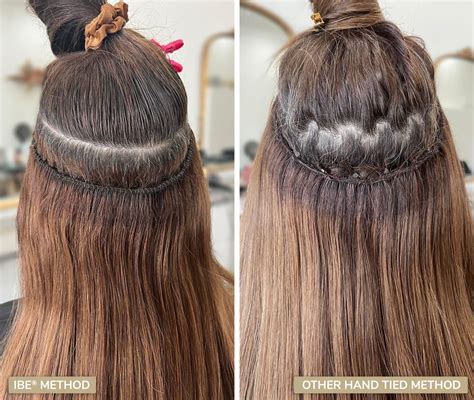Getting the Perfect Braid
Braided hair extensions are a great way to add length, volume, and style to your hair. They can be used to create a variety of looks, from casual to formal. Braids are also a protective style, which means they can help to prevent damage to your natural hair.

There are many different braiding techniques, so you can find one that works best for your hair type and desired look. Some of the most popular braiding techniques include:
- Cornrows: These are tight, narrow braids that are cornrowed close to the scalp. Cornrows can be styled in a variety of ways, including in buns, ponytails, and updos.
- French braids: These are three-strand braids that are started at the crown of the head and then braided down to the nape of the neck. French braids are a great way to add volume and length to your hair.
- Dutch braids: These are similar to French braids, but they are started at the nape of the neck and braided up to the crown of the head. Dutch braids are a great way to create a more voluminous look.
- Box braids: These are square-shaped braids that are created by sectioning the hair and then braiding each section separately. Box braids can be styled in a variety of ways, including in buns, ponytails, and updos.
- Micro braids: These are small, individual braids that are created by braiding very small sections of hair. Micro braids are a great way to add length and volume to your hair without adding too much bulk.
Choosing the Right Hair Extensions
The type of hair extensions you choose will depend on your hair type, desired look, and budget. There are two main types of hair extensions: human hair and synthetic hair.
Human hair extensions are more expensive than synthetic hair extensions, but they are also more natural-looking and longer-lasting. They can be styled with heat, so you can curl, straighten, or blow dry them just like your own hair.
Synthetic hair extensions are less expensive than human hair extensions, but they are not as natural-looking and they cannot be styled with heat. They are also more likely to tangle and mat.
When choosing hair extensions, it is important to consider the length, texture, and color of your own hair. You want to choose extensions that are a good match for your own hair, so that they blend in seamlessly.
Applying Braided Hair Extensions
Braided hair extensions can be applied by a professional hairstylist or you can do it yourself at home. If you are applying the extensions yourself, it is important to read the instructions carefully and follow them closely.
To apply braided hair extensions, you will need:
- Braided hair extensions
- A hair extension tool
- A hairbrush
- A comb
- Scissors
- Section your hair: Divide your hair into small sections.
- Apply the hair extensions: Use the hair extension tool to attach the hair extensions to your own hair.
- Trim the hair: Trim the hair extensions to your desired length.
- Style your hair: Style your hair as desired.
Caring for Braided Hair Extensions
Braided hair extensions can last for several weeks or months with proper care. To keep your hair extensions looking their best, follow these tips:
- Wash your hair: Wash your hair regularly with a mild shampoo and conditioner.
- Condition your hair: Condition your hair regularly to keep it soft and manageable.
- Brush your hair: Brush your hair regularly to prevent tangles and mats.
- Avoid heat: Avoid using heat styling tools on your hair extensions, as this can damage them.
- Get regular trims: Get regular trims to remove any split ends and keep your hair extensions looking healthy.
Common Mistakes to Avoid
Here are some common mistakes to avoid when braiding hair extensions:
- Using too much hair: Using too much hair when braiding can make the braids too bulky and uncomfortable to wear.
- Braiding too tightly: Braiding too tightly can damage your hair and cause it to break.
- Not blending the hair extensions: Not blending the hair extensions with your own hair can make them look unnatural.
- Over-washing your hair: Over-washing your hair can remove the natural oils that protect your hair and your hair extensions.
- Using harsh hair products: Using harsh hair products can damage your hair and your hair extensions.
Pros and Cons of Braided Hair Extensions
Pros:
- Braided hair extensions can add length, volume, and style to your hair.
- Braided hair extensions are a protective style, which means they can help to prevent damage to your natural hair.
- Braided hair extensions can be styled in a variety of ways.
- Braided hair extensions are relatively easy to care for.
Cons:
- Braided hair extensions can be expensive.
- Braided hair extensions can be time-consuming to apply and remove.
- Braided hair extensions can be uncomfortable to wear, especially if they are too tight.
Conclusion
Braided hair extensions are a great way to add length, volume, and style to your hair. They are a protective style that can help to prevent damage to your natural hair. There are many different braiding techniques, so you can find one that works best for your hair type and desired look. With proper care, braided hair extensions can last for several weeks or months.
